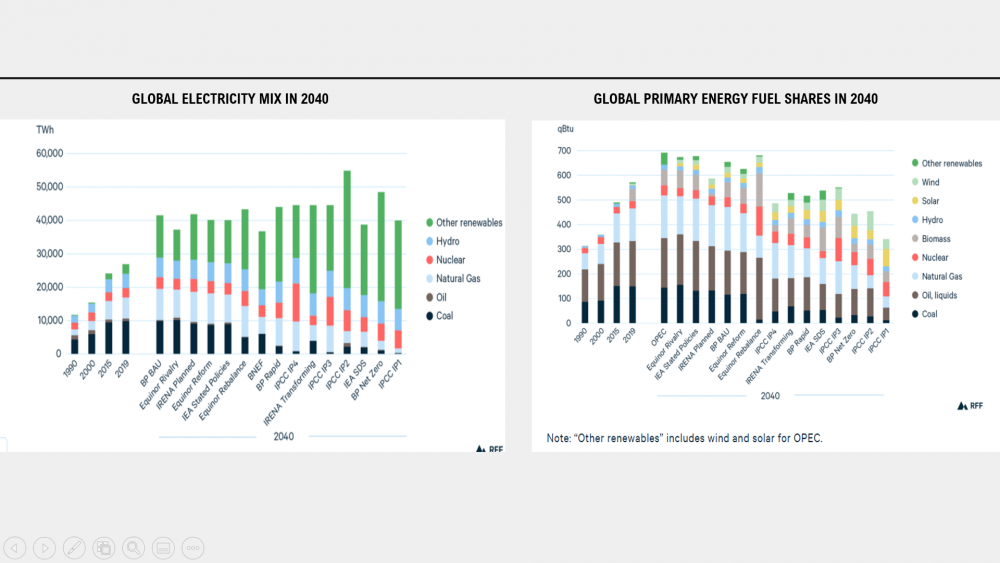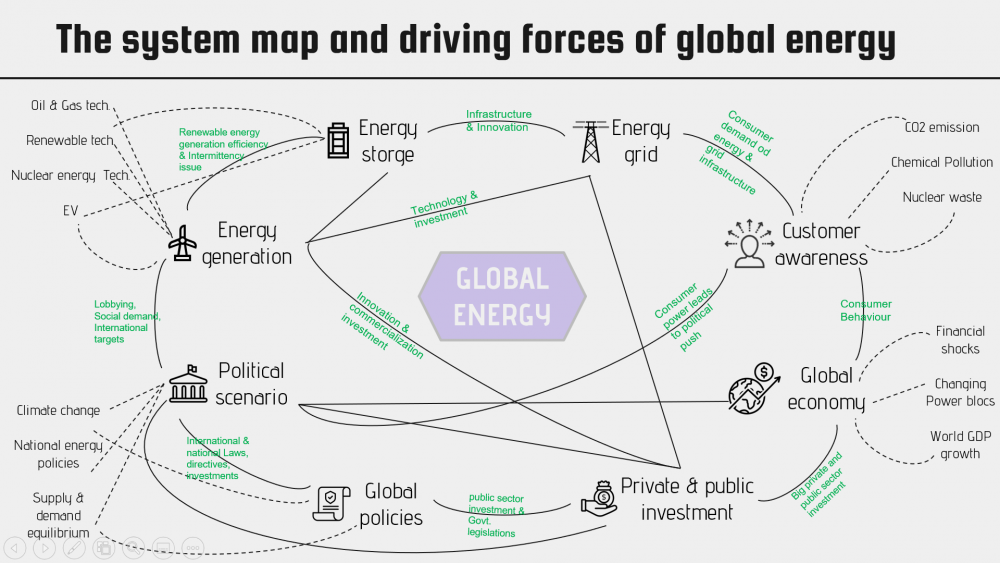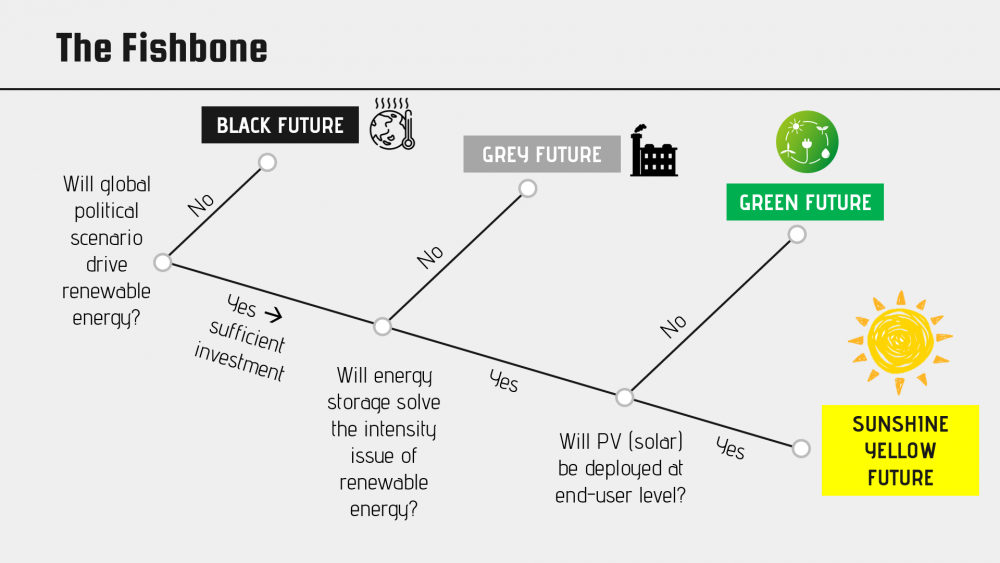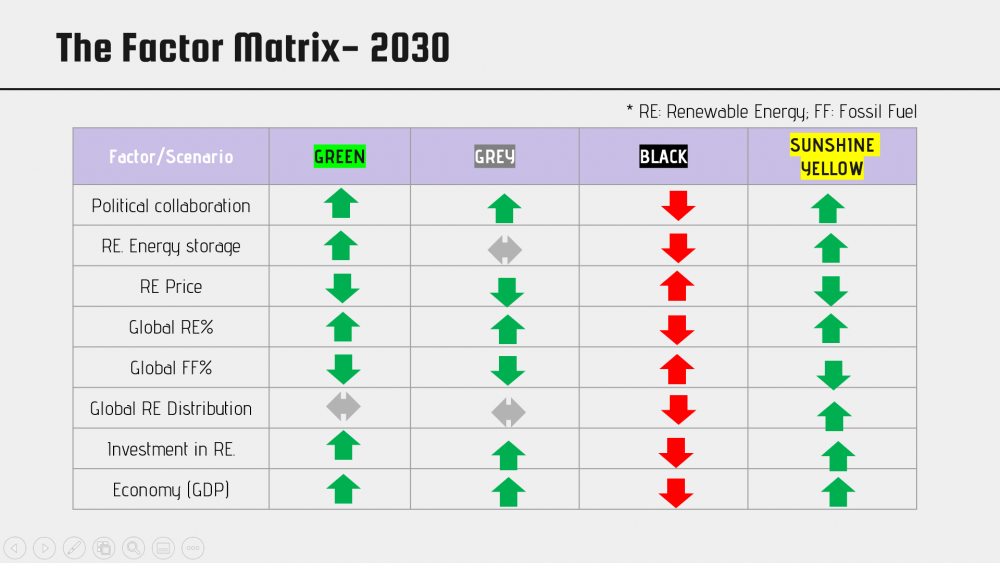Difference between revisions of "Global Energy System- How we power things"
| Line 15: | Line 15: | ||
2. Disruptive technologies in renewable energy space are on a growth curve to become the primary source of energy.<br> | 2. Disruptive technologies in renewable energy space are on a growth curve to become the primary source of energy.<br> | ||
[[Image: Energy_reports.png|1000px|]] | |||
Revision as of 17:55, 19 December 2021
Team Members
Abdallah Mteir
Hadeel Khawaldeh
Minh Nguyen Duc
Sebastian Vinkenfluegel
Richa Kushwaha
Wei Chou Wang
Project Overview
Why do we need scenarios to be ready for the future?
1. Long-term energy projections from credible & esteem agencies vary widely, depending on underlying assumptions and methodologies.
2. Disruptive technologies in renewable energy space are on a growth curve to become the primary source of energy.
This wiki examines several scenarios related to the future of the Global Energy System by 2030.
Questions to ask about the Global Energy System
1. How much energy is produced in the world? What are the geographical split and the spread of energy production?
2. How much energy is used in the world? What is the geographical split?
3. How many resources of fossil fuels are in the world?
4. How many reserves of fossil fuel are in the world?
6. What technologies are there for energy production?
7. What are energy storage technologies out there?
8. How much energy is used in what form (electricity, heat, transport)?
9. What are the major impacts to increase energy efficiency?
10. What is the seasonality of energy consumption? (day / month / year)
11. What is the current carbon footprint in the energy production system and consumption?
12. What’s the most efficient alternative resource of fossil fuels currently?
13. What’s the biggest challenge of renewable energy currently?
14. How do we change people’s mindset to use renewable energy even it may be more expensive?
15. What's the threshold for price/cost vs. capacity for production? <be>
Sector Map
Driving Forces
Fishbone Analysis
Scenario Matrix Map
Scenarios
Scenario 1 - Black Future
Key Question:Will global political scenario drive renewable energy?
Scenario Answer: No
Scenario Stats:
Surprising 6.5/10
Likely 5/10
Scenario 2 - Grey Future
Key Question: Will energy storage solve the intermittency issue of renewable energy?
Scenario Answer: No
Scenario Stats:
Surprising 6.5/10
Likely 5/10
Scenario 3 - Green Future
Key Question: Will PV (solar) be deployed at end-user level?
Scenario Answer: No
Scenario Stats:
Surprising 6.5/10
Likely 5/10
Nobody thought that in 2022…
That renewable energy disruption will be swift and successful in the energy and transport sector by 2030. Oil, natural gas (methane), coal, and uranium will become obsolete for the purposes of generating significant amounts of electricity and powering the automobile.
By 2025, Successful innovation disruption in the storage of renewable energy to solve issues around energy intermittency. Traditional power stations will not be cost-effective, as cheap and clean energy is widely available.
By 2027, Energy generation and usage will become decentralized, democratic, and disruptive by this period. Every house will have its own energy production and usage for household usage, same with industries.
by 2030, Houses can sell the excess energy to spaces that will require more energy. Also, in terms of automobile fuel, energy will change to hydrogen and biobased fuel along with small and efficient electric energy storage.
Scenario 4 - Yellow Future (Decentralized, Disruptive, Democratic)
Key Question: Will PV (solar) be deployed at end-user level?
Scenario Answer: Yes
Scenario Stats:
Surprising 6.5/10
Likely 5/10
In 2022 the end user started to demand to have renewable energy supplied, in terms of heating and electricity. The demand from the end user provided a significant pull through the energy industry emphasizing the expansion of renewalable energy, such as photovoltaic and wind power.
During the same year, the first developments of energy storage are made, this includes hydrogen and battery storage. However, the energy storage systems are not available on a large scale to provide balance to the electrical grid.
By year 2025, the pull of renewable energy results in the first larger installations of renewable energy installations. The power supply from renewables starts to become more vastly available and start to exceed the traditional power generations. The renewable energies started to destabilize the electricy grid, due to volatility. Furthermore, traditional power generation units still have to be kept as cold reserve to balance out the volatility of supply from the renewables.
The first breakthroughs for solid state batteries have been completed and the first companies experimented with the large-scale production.
By year 2027, the electricity grid becomes more destabilized due to the renewable energies. The end consumer is experiencing first outages in the electricity supply. However, larger outages were able to be avoided as that time. Additional renewable energy power stations are on the way to be completed during the next years. Due to the price drop PV installations on roofs become very common. First houses are being equipped with solid state batteries to balance the supply and demand and provide intermediate storage e.g. to load electrical cars. The production of solid-state batteries are now fully running. The demand is significant.
By 2030, most houses are equipped with solid state batteries and PV installations. Electricity is mostly produced on the low or medium voltage level and only shared within the community and only rarely beyond it. The batteries are balancing out the supply and demand. Storage installations of batteries are able to last for several days, in larger communities’ weeks, or even month, being able to meet supply and demand. Fossil fuel power plants are still kept available for long cloudy, days, without wind. However, the classical top-down energy supply is fully disrupted. Energy for houses becomes a very cheap resource for everybody.



